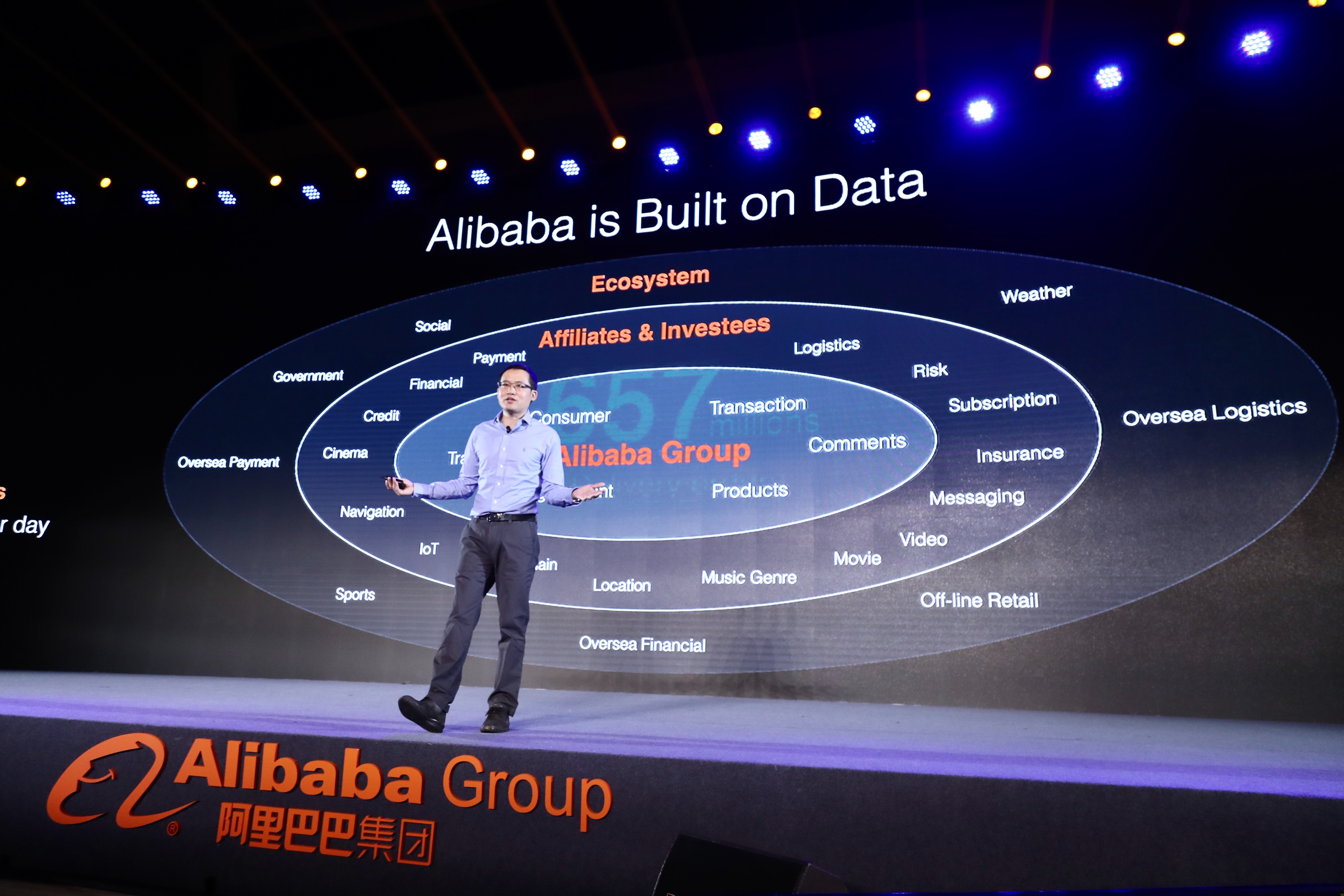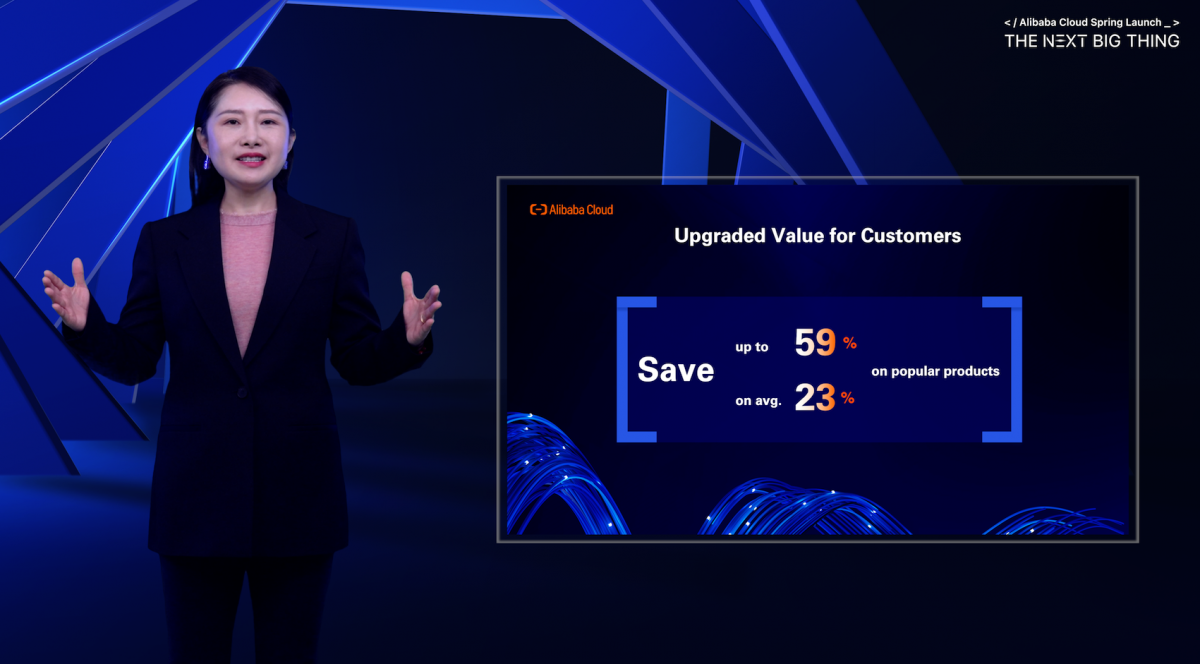
Alibaba Group’s powerful computing network and wealth of data gives the company key advantages in technological innovation, according to Chief Technology Officer Jeff Zhang, who last week offered a glimpse of products and services Alibaba is readying for rollout that will be based on artificial intelligence.
“We have been very successful business-wise, commerce-wise and sometimes that tends to overshadow what we have accomplished on the technological front,” Zhang said during an investors conference held at Alibaba headquarters in Hangzhou, China. To support its giant e-commerce business, Alibaba has built a computational network that is the world’s fastest cloud-based “streaming processing” platform.



“One of our main characteristics is our scale,” Zhang said. During Alibaba’s blockbuster Singles Day sale last year, the company’s platform processed 175,000 transactions a second at peak periods, or 10 million orders per minute. This “is a huge volume and 10 million orders all have to be processed perfectly ‚Ķ every transaction has to be secure, safe and reliable,” Zhang said.
“Our businesses are more diverse and complex than any other internet company,” he explained, pointing out that Alibaba is able to draw extensive data on shopping habits not only from shopping websites but also geo-location apps, financial services, social media and scores of other sources to help better serve customers and drive efficient merchant operations. Alibaba servers currently store a staggering 1,000 petabytes of data.
“We want to leverage this [data] to enable personalization, to power search, security, customer service—in all of these areas we are providing support through our data products,” he said.
For an infographic overview of Alibaba and AI-enhanced e-commerce, click here.
Increasingly, the company is able to reach these research-and-development goals through higher efficiency and by making smart investments, without increasing headcount. Data is driving that efficiency, Zhang said, who added that artificial intelligence technologies such as machine learning, deep learning, moving towards neural networks are powering a rapid migration process from idea conception to product launch.
“In the past, Alibaba engineers might have taken three months to launch a new product. “Now it might take just a few days,” Zhang said. “In Ali, we are literally launching a new product and new features each and every day.”



And, while Alibaba businesses are the largest clients of the Alibaba Cloud platform, “A lot of the time we come up with things internally to serve our own businesses and then make them available to the market afterwards,” he said.
An example of this is in customer service, where Alibaba developed an AI chatbot internally, then made it available to merchants on its platforms. Despite growing sales, “Our customer service department does not have an increasing headcount because the quality of our transactions is increasing and, secondly, because we are increasingly efficient in resolving disputes, relying on artificial intelligence based on voice-recognition technology and natural language processing technology,” Zhang explained.



More than 100,000 merchants are now using Alibaba’s AI-enabled “store concierge” chatbot to field millions of customer questions for their own virtual stores. “The vast majority of these questions could be answered by artificial intelligence, by a bot,” Zhang said. “We have managed to achieve over 50 percent headcount reduction in the customer service departments” of participating merchants, he said.
Alibaba’s AI advantage, he noted, “is that we have a lot of customers on a big platform.” With information constantly streaming in, in real time, “that’s all data we use to continuously train our systems and so the systems are becoming increasingly intelligent.”
The company is also constantly refining the Pailitao image search app, which has successfully in utilized deep learning in attempts to deliver better results. As a featureon Mobile Taobao and the Tmall app, Pailitao allows a user to take a photo of an item, and the app in real time will search and display listings for products that look like the photographed item. More than 10 million people a day are using the feature.
Pailitaoworks by detecting the specific features associated with each product in order to reduce number of “false positive hits,” which have nothing or little to do with the image being usedfor the search. It “deep learns” by reviewing thousands upon thousands of photos of bags, skirts, toys, lawn furniture—anything that could possibly be sold on the platforms. Training Pailitao needs to be object specific, which means that pictures of objects with little (or few?) distinctive features such as products without brands and text on them remain a challenge.
“This is an important breakthrough for us,” Zhang said, because it’s “a more difficult thing to accomplish than other kinds of image search ‚Ķ I can tell you, a lot of image-recognition technology out there is not good enough for commercial applications.” While the company continues to work on the image-search technology, Alibabais working on similar technology for videos too, he added, “to push you to product recommendations based on what you see in that video.”
Also in the pipeline are New Retail solutions that merge online and offline retailing. Alibaba is working on a digital shelf price tag, using e-ink, that wirelessly connects to a physical store’s data system—allowing merchants to change prices quickly and easily according to actual demand, perhaps even several times a day, as well as track inventory and sales trends. “What we are talking about is the digitalization of the offline retail environment,” Zhang said.
Alibaba is not limiting itself to the retail sector. The company is working on technology to enable smart products that connect to each other and can respond to voice commands, an area called distributed voice recognition, that can be applied in manufacturing, in the home (think Amazon’s Echo, a chatbot/speaker) and other environments.
“Home, hotel, education, entertainment—all of these represent potential applications for our voice-controlled intelligent platform,” he said. “Probably in July or August we will be releasing a whole series of new products,” he added, without going into detail.
However, Zhang said he did not expect AI to change the world overnight: “For large-scale deployment of AI out there in the real world, I think the cost is going to have to come down a lot. Today you have very expensive products like GPU [powerful AI processing chips] and so on, but when the algorithms get stable, which is really step one, then we can find ways to produce chips less expensively.”
“AI is just getting started,” Zhang said. “There are a lot of things that still need to happen.”
But at Alibaba, “We have our own computing power, we have our own algorithms and the Alibaba economy itself is the world-leading use-case for artificial intelligence,” he said.
E-commerce, financial payments, logistics, entertainment—all of these different application scenarios exist within the Alibaba ecosystem. And the company has algorithm-based, real-time updating based on all of data collected from its products, from the commerce on its platforms, and around its users.
“As that learning deepens, we can continue to dramatically improve our platform,” Zhang said.





